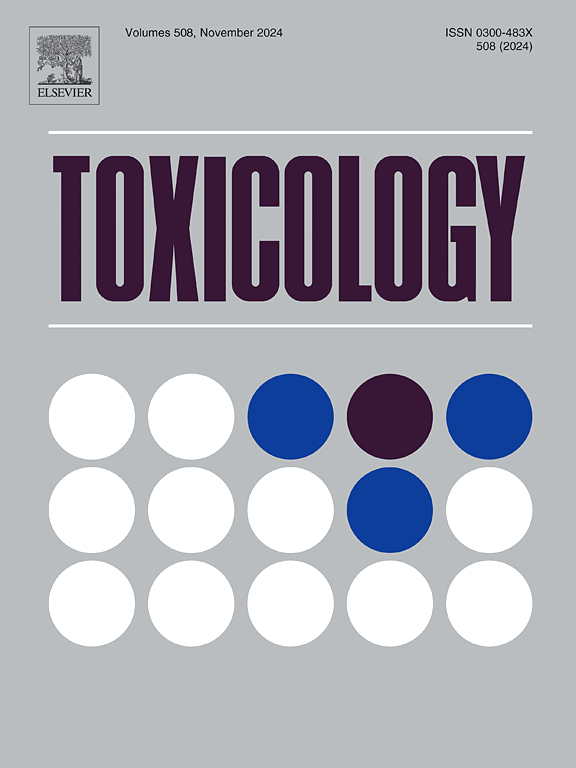AI-based toxicity prediction models using ToxCast data: Current status and future directions for explainable models
IF 4.6
3区 医学
Q1 PHARMACOLOGY & PHARMACY
引用次数: 0
Abstract
Artificial intelligence (AI) offers new opportunities for developing toxicity prediction models to screen environmental chemicals. U.S. EPA’s ToxCast program provides one of the largest toxicological databases and has consequently become the most widely used data source for developing AI-driven models. ToxCast In this review, we analyzed 93 peer-reviewed papers published since 2015 to provide an overview of ToxCast data-based AI models. We overviewed the current landscape in terms of database structure, target endpoints, molecular representations, and learning algorithms. Most models focus on data-rich endpoints and organ-specific toxicity mechanisms, particularly endocrine disruption and hepatotoxicity. While conventional molecular fingerprints and descriptors are still common, recent studies employ alternative representations—graphs, images, and text—leveraging advances in deep learning. Likewise, traditional supervised machine-learning algorithms remain prevalent, but newer work increasingly adopts semi- and unsupervised approaches to tackle data-sparsity challenges. Beyond classical structure-based QSAR, ToxCast data are also being used as biological features to predict in vivo toxicity. We conclude by discussing current limitations and future directions for applying ToxCast-based AI models to accelerate next-generation risk assessment (NGRA).
使用ToxCast数据的基于ai的毒性预测模型:可解释模型的现状和未来方向。
人工智能(AI)为开发毒性预测模型以筛选环境化学物质提供了新的机会。美国环保署的ToxCast项目提供了最大的毒理学数据库之一,因此成为开发人工智能驱动模型最广泛使用的数据源。在这篇综述中,我们分析了自2015年以来发表的93篇同行评议论文,概述了基于ToxCast数据的人工智能模型。我们从数据库结构、目标端点、分子表示和学习算法等方面概述了当前的情况。大多数模型侧重于数据丰富的端点和器官特异性毒性机制,特别是内分泌干扰和肝毒性。虽然传统的分子指纹和描述符仍然很常见,但最近的研究利用深度学习的进步,采用了图形、图像和文本等替代表示。同样,传统的监督式机器学习算法仍然普遍存在,但新的工作越来越多地采用半监督和无监督的方法来解决数据稀疏性挑战。除了经典的基于结构的QSAR, ToxCast数据也被用作预测体内毒性的生物学特征。最后,我们讨论了应用基于toxcast的人工智能模型加速下一代风险评估(NGRA)的当前局限性和未来方向。
本文章由计算机程序翻译,如有差异,请以英文原文为准。
求助全文
约1分钟内获得全文
求助全文
来源期刊

Toxicology
医学-毒理学
CiteScore
7.80
自引率
4.40%
发文量
222
审稿时长
23 days
期刊介绍:
Toxicology is an international, peer-reviewed journal that publishes only the highest quality original scientific research and critical reviews describing hypothesis-based investigations into mechanisms of toxicity associated with exposures to xenobiotic chemicals, particularly as it relates to human health. In this respect "mechanisms" is defined on both the macro (e.g. physiological, biological, kinetic, species, sex, etc.) and molecular (genomic, transcriptomic, metabolic, etc.) scale. Emphasis is placed on findings that identify novel hazards and that can be extrapolated to exposures and mechanisms that are relevant to estimating human risk. Toxicology also publishes brief communications, personal commentaries and opinion articles, as well as concise expert reviews on contemporary topics. All research and review articles published in Toxicology are subject to rigorous peer review. Authors are asked to contact the Editor-in-Chief prior to submitting review articles or commentaries for consideration for publication in Toxicology.
 求助内容:
求助内容: 应助结果提醒方式:
应助结果提醒方式:


